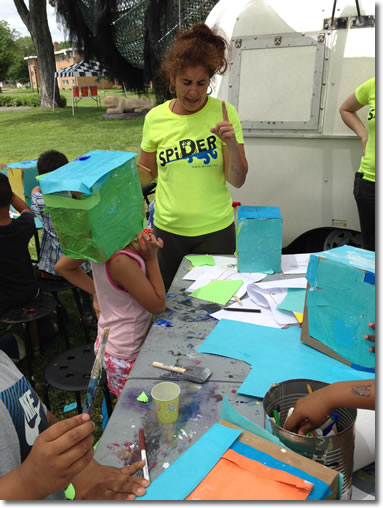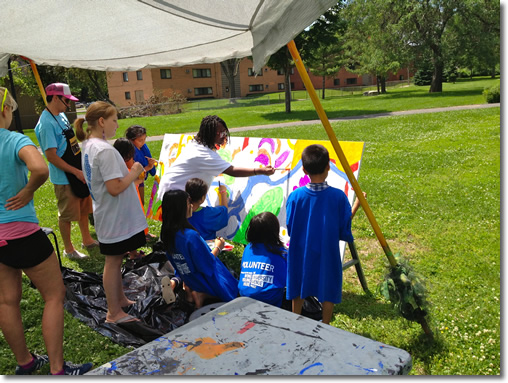Drinking Water Protection
- Drinking Water Protection Home
- About Us
- A-Z Index of Contaminants in Water
- Community Public Water Supply
- Drinking Water Grants and Loans
- Drinking Water Institute
- Drinking Water in Schools and Child Cares
- Drinking Water Revolving Fund
- Laws and Rules
- Noncommunity Public Water Supply
- Source Water Protection
- Water Operator and Certification Training
- Drinking Water Protection Contacts
Related Topics
- Annual Reports
- Drinking Water Risk Communication Toolkit
- Drinking Water Protection External Resources
- Fact Sheets
- Forms
- Invisible Heroes Videos: Minnesota's Drinking Water Providers
- Noncom Notes Newsletter
- Sample Collection Procedures (videos, pictures, written instructions)
- Waterline Newsletter
Related Sites
- 10 States Standards
- Clean Water Fund
- Health Risk Assessment – Guidance Values and Standards for Water
- Minnesota Well Index
- Water and Health
- Wells and Borings
Environmental Health Division
Public Art St. Paul Promotes Water Awareness
From the Fall 2014 Waterline
Quarterly Newsletter of the Minnesota Department of Health Public Water Supply Unit, Waterline
A complete list of feature stories can be found on the Waterline webpage.
 |
“The most memorable art conveys a message,” says Mary Johnson, the education director for Public Art St. Paul, a nonprofit organization that engages artists in shaping the form and experience in the city. In addition for caring for St. Paul’s civic art and assessing the condition of its public art collection, Public Art St. Paul is active in educational programs to promote knowledge and understanding through art.
For the last five years, much of the focus has been on water infrastructure with the intent to “make the invisible visible,” according to St. Paul Public Art president Christine Podas-Larson. The initiatives have included a partnership with local watershed districts to help people “be more aware of their own roles in what can happen with water quality.”
Another is a collaborative effort combining 25 artists and scientists to focus on water quality in the Mississippi River Valley. “Artists can’t do what engineers and scientists do,” says Podas-Larson, “but they can bring forward the fullness of the city life. In doing that, it is fundamentally important that we pay attention to water quality and ignite people’s imagination around these issues in ways that maybe aren’t possible through other avenues.”
Public Art St. Paul has also been conducting educational programs at Western Sculpture Park, on Marion Avenue to the southwest of the state capitol, an area with many low-income residents dependent on the immediate neighborhood for recreational and cultural opportunities. During the 1990s local residents secured funding to transform a barren field into a park, hoping in the process to reduce crime in the area and promote public improvements. Recreation and culture came together on the site with a sculpture exhibition that is constantly rotating under the guidance of curator John Hock. The park features pre-existing sculptures loaned by artists as well as site-specific commissioned works.
Ongoing educational programs and events bring together people from the immediate area and beyond. In 2014 the programs began focusing on artistic content with considerations of the water system in the neighborhood. Johnson said the organization hired four artists for a mobile art lab, a series of workshops held every Tuesday afternoon. The artists include Esther Ouray of the In the Heart of the Beast Puppet and Mask Theatre in Minneapolis, which has been active for years in promoting water awareness through art.
 |
| Esther Ouray of In the Heart of the Beast Theatre leads participants in making water monster masks at Western Sculpture Park. |
 |
Two of the artists oversee the workshop each week, and the young people involved have been engaged in activities surrounding water. They have counted the number of storm drains in the park and even made rubbings of the drains. “From that, they get an understanding of what’s underneath, the pipes going to the river,” Johnson explains. “Now they talk about keeping water clean.”
Decorating reusable water bottles with lanyards is another activity, and the artists found creative ways to teach the group what a watershed is. “Through games, they are doing it by having fun,” Johnson says.
Although anyone has been welcome, the average age of the kids attending is 8, although the group has included teenagers. Johnson says they may tailor the workshop for older groups and find ways to explore other aspects of water, such as wastewater and drinking water.
“It’s totally evolving,” said Johnson, who added that they plan to keep the water focus for at least another summer.
Of Interest
Minneapolis Theater Focuses on Water in Series of Performances
Go to > top